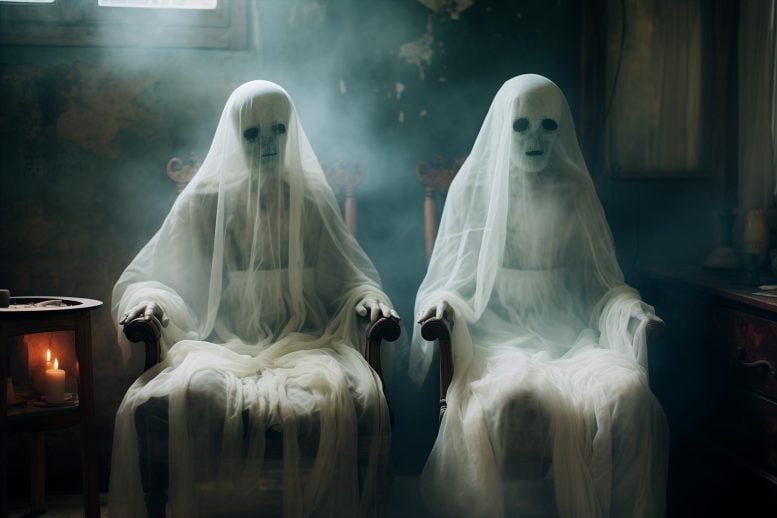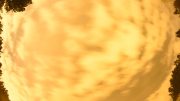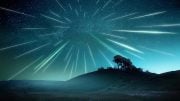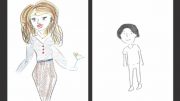
A significant proportion of Americans believe in ghosts, with many claiming personal encounters. However, despite the prevalence of recording devices, concrete evidence for the existence of ghosts remains elusive.
Is it possible for there to be ghosts?
Certainly, lots of people believe in ghosts – a spirit left behind after someone who was alive has died.
In a 2021 poll of 1,000 American adults, 41% said they believe in ghosts, and 20% said they had personally experienced them. If they’re right, that’s more than 50 million spirit encounters in the U.S. alone.
That includes the owner of a retail shop near my home who believes his place is haunted. When I asked what most convinced him of this, he sent me dozens of eerie security camera video clips. He also brought in ghost hunters who reinforced his suspicions.
Some of the videos show small orbs of light gliding around the room. In others, you can hear faint voices and loud bumping sounds when nobody’s there. Others show a book flying off a desk and products jumping off a shelf.
Many ghostly encounters are due to the way your brain interprets certain sights and sounds.
It’s not uncommon for me to hear stories like this. As a sociologist, some of my work looks at beliefs in things like ghosts, aliens, pyramid power, and superstitions.
Along with others who practice scientific skepticism, I keep an open mind while maintaining that extraordinary claims require extraordinary evidence. Tell me you had a burger for lunch, and I’ll take your word for it. Tell me you shared your fries with Abraham Lincoln’s ghost, and I’ll want more evidence.
In the “spirit” of critical thinking, consider the following three questions:
Are Ghosts Possible?
People may think they’re experiencing ghosts when they hear strange voices, see moving objects, witness balls or wisps of light, or even translucent people.
Yet no one describes ghosts as aging, eating, breathing, or using bathrooms – despite plumbers receiving many calls about toilets “ghost-flushing.”
So could ghosts be made of a special kind of energy that hovers and flies without dissipating?
If that’s the case, that means when ghosts glow, move objects, and make sounds, they are acting like matter – something that takes up space and has mass, like wood, water, plants, and people. Conversely, when passing through walls or vanishing, they must not act like matter.
But centuries of physics research have found nothing like this exists, which is why physicists say ghosts can’t exist.
And so far, there is no proof that any part of a person can continue on after death.
The real truth is out there, says this ghost skeptic.
What’s the Evidence?
Never before in history have people recorded so many ghost encounters, thanks in part to mobile phone cameras and microphones. It seems there would be great evidence by now. But scientists don’t have it.
Instead, there are lots of ambiguous recordings sabotaged by bad lighting and faulty equipment. But popular television shows on ghost hunting convince many viewers that blurry images and emotional reactions are proof enough.
As for all the devices ghost hunters use to capture sounds, electrical fields and infrared radiation – they may look scientific, but they’re not. Measurements are worthless without some knowledge of the thing you’re measuring.
When ghost hunters descend on an allegedly haunted location for a night of meandering and measurement, they usually find something they later deem paranormal. It may be a moving door (breeze?), a chill (gap in the floorboards?), a glow (light entering from outside?), electrical fluctuations (old wiring?), or bumps and faint voices (crew in other rooms?).
Whatever happens, ghost hunters will draw a bull’s-eye around it, interpret that as “evidence” and investigate no further.
There’s a scientific explanation for spooky sightings.
Are There Alternative Explanations for ‘Paranormal’ Events?
Personal experiences with ghosts can be misleading due to the limitations of human senses. That’s why anecdotes can’t substitute for objective research. Alleged hauntings usually have plenty of non-ghostly explanations.
One example is that retail establishment in my neighborhood. I reviewed the security camera clips and gathered information about the store’s location and layout, and the exact equipment used in the recordings.
First, the “orbs”: Videos captured many small globes of light seemingly moving around the room.
In reality, the orbs are tiny particles of dust wafting close to the camera lens, made to “bloom” by the camera’s infrared lights. That they appear to float around the room is an optical illusion. Watch any orb video closely and you’ll see they never go behind objects in the room. That’s exactly what you’d expect with dust particles close to the camera lens.
Next, voices and bumps: The shop is in a busy corner mini-mall. Three walls abut sidewalks, loading zones and parking areas; an adjacent store shares the fourth. The security camera mics probably recorded sounds from outdoors, other rooms and the adjacent unit. The owner never checked for these possibilities.
Then, the flying objects: The video shows objects falling off the showroom wall. The shelf rests on adjustable brackets, one of which wasn’t fully seated in its slot. The weight of the shelf caused the bracket to settle into place with a visible jerk. This movement sent some items tumbling off the shelf.
Then, the flying book: I used a simple trick to recreate the event at home: a hidden string taped inside a book’s cover, wrapped around the kitchen island, and tugged by my right hand out of camera range.
Experience the mystery of the flying book.
Now I can’t prove there wasn’t a ghost in the original video. The point is to provide a more plausible explanation than “it must have been a ghost.”
One final consideration: Virtually all ghostly experiences involve impediments to making accurate perceptions and judgments – bad lighting, emotional arousal, sleep phenomena, social influences, culture, a misunderstanding of how recording devices work, and the prior beliefs and personality traits of those who claim to see ghosts. All of these hold the potential to induce unforgettable ghostly encounters.
But all can be explained without ghosts being real.
Written by Barry Markovsky, Distinguished Professor Emeritus of Sociology, University of South Carolina.
Adapted from an article originally published in The Conversation.![]()









No.
There are many, many other energy phenomenon that can have ghost-like qualities, but are not “spirits of dead people”.
There are non-corporeal beings, but they are not ghosts. THAT is a whole other topic.
A rather interesting article, however, I didn’t see much in the author’s very short bio that they’d know anything more about the phenomenon than anyone else would, however, I was reading about brains and frequencies not long ago and from personal experience I know that at least some of those transmitted signals that are essential for a mind to even function travel a lot further than from one side of the brain to the other side.
On the other hand, we all know about narrative control and censorship; it’s not new, it’s been going on for thousands of years; we all know that brain waves are being used to aid some handicapped individuals and other uses. In the field of quantum physics we know time that for at least photons time travel is possible, and several such time machines have in fact been constructed. In the field of the paranormal there is the subject of what’s called “astral projection”, which, from descriptions that I’ve read from individuals acclimated in Western Culture, few if any of those individuals have actually consciously achieved the feat, that they claim to have achieved, however, I apparently,witnessed, the apperation of a dog that I knew had died several weeks earlier. How would that even be possible?
Well, it’s called criminal behavior by people who hijack natural phenomenon and make religions of them, for which we see in action even today in the genocide being perpetrated in the Middle East. These sorts of human behavior are the very sort of activities that prevent humans from evolving beyond the intelligence of a slime cell.
To put it simplely, just reading the sort of articles that one finds in science journals reveals intense criminal and political motivations to hinder science research, and even if it did, anything good that might come out of it would be subverted to commit evil, as we saw with the whole covid-19 narrative.
Evidence suggests that the first life-form was a dormant life and if so; from that dormancy came the diversity of life we see today. It is well recognised in science that the approach to calling evolution a one-energy system, would mean that the dormancy still exists and is still operating. (Subconscious working 24/7 globally). The diversity of life proves there is ability in the subconscious, but where do we look for proof? Our emotional status provides us with the perfect ammunition for disputes and these disputes are regularly fought on a whim and not on evidence. We all have different abilities in both academic and physical attributes, and if this is the case in our conscious world where we can see and measure ability, think how almost impossible this must be to recognise it in the subconscious, where ability cannot be measured. (If only we could penetrate into this mysterious beginning of life, what wonders would we find?) Is it no wonder that the supernatural became such a phenomenon? Looking at the supernatural in its many states is misleading, and can send us down many strange and useless paths. Just over 100 years ago, 60% of the world’s population believes in fairies; imagine if we had gone down that path! Though there appears to be many variations of the supernatural, this is misleading, because a one-energy system has a function and a limit to allow that function to continue. We see this in ourselves, a star, a galaxy and the universe. Y= subjective (Supernatural) X= objective ( )
I’ve had my fair share of events that replicate physics can’t explain. Just recently, a shelf bracket that had been in place on the wall for over 30 years decided to jump out of the slots. And drop the shelf. Luckily, items the next shelf down stopped the 30 lbs of shelf and junk from falling and destroying some electronics. No sign of fatigue, and after reslotting it, it was as firm as ever. This event, while odd, is highlighted by a “shadow man” sighting the day before, in a spot that has had a shadowy figure several times on camera. Put together, I do the unscientific option of association, purely because there isn’t a good reason for the shelf to have lifted, bracket unhook, and shelf lower.
In 1972 my brother died from an accident at his workplace. I was 8 years old and my sister was 20 years old. Our parents were in Texas where my brother passed but we lived in PA. Before our parents returned to PA, my sister was sleeping on our living room floor when she awoke to see our brother standing in the front doorway waving to her! Shortly after our parents returned to PA, I awoke to see our brother standing in my bedroom wearing this gold bathrobe that he used to wear when he was alive. The strange thing about the two of us seeing him after he died, is that neither one of us knew about the other one seeing him until many years later! We believe that since his passing was caused by this unforeseen tragedy, he came back to each of us to say goodbye! Although, I say unforeseen, my sister had a premonition of his death about 6 years before it happened, just that our brother was going to die when he was 16 or 17……we buried him 2 days before his 18th birthday! She had told several of her friends about her premonition at the time she had it, and once she did, it left her mind. After our brother passed, some of those friends called her and asked her if she remembered what she had told them years earlier! My sister has had many other premonitions that have come true but she never asked for them and didn’t ever get enough details to help prevent their coming about! She eventually rebuked them and they stopped for many years! My sister has no reason to lie about these events and she always tells them the exact same way so I believe her to be telling the truth about them! There are things in this life that can’t be scientifically explained!